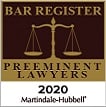When a construction worker falls from a scaffold, the accident is usually catastrophic. The injuries are life-changing and many times are fatal. The Department of Labor has estimated that 65 percent of the construction industry perform their work using scaffolds.
Most construction projects require a scaffolding contractor to erect and dismantle scaffolding. A scaffolding contractor must be specially licensed. The scaffolding contractor usually contracts with a general contractor to design the scaffolding and drawings or plans are prepared for the type of scaffolding. The erection and dismantling of scaffold must be performed under the supervision and direction of a “qualified” person under Title 8 of the California Code of Regulations, known as CAL-OSHA.
When a scaffolding accident occurs, liability can be difficult to establish. Since scaffolding is temporary, the scaffolding may have been removed by the time an attorney represents the injured worker or the worker’s family. Witnesses must be identified and contacted as soon as possible to establish how the fall occurred and how the scaffolding was erected and inspected. The safety training materials and safety manuals of the scaffolding contractor and the general contractor should be obtained along with the scaffolding contract and design drawings.
Attorneys who represent injured scaffold workers must be familiar with CAL OSHA regulations. CAL-OSHA regulations may be admissible at trial to establish a duty and the standard of care. Scaffolding contractors and general contractors usually disclaim any responsibility for the accident. Almost always the contractors blame the accident on misuse of the scaffolding or negligence of the worker and they are quick to blame the worker’s employer for failure to provide a safe place to work.
CAL-OSHA and Federal OSHA regulations require that the scaffolding must be visually inspected for defects before use each day. The contract usually provides information about who is responsible for daily inspections. The testimony of witnesses about inspections can be helpful in establishing liability. The file of the scaffolding contractor and the general contractor usually provide inspection information. Progress photographs of the work, safety meetings notes and all documents relating to inspection are needed to prove liability.
In a recent case, the lawyers at the Van Blois & Associates successfully represented a 22 year old stocker-scrapper construction worker who fell 16 1/2 feet from scaffolding at a construction site in San Jose, California. The guardrail on the third level of the scaffold was not properly secured to the vertical uprights and could not support the worker when he came in contact with it. The worker fell and landed on his face and head causing a severe traumatic brain injury and multiple facial fractures. He has no memory as to how the accident happened. Liability of the scaffolding contractor and general contractor was established through the contract documents and deposition testimony. Both contractors failed to adequately inspect the scaffolding each day and failed to assure the safety of all persons on the job site. The injured worker realized a substantial monetary recovery.






















